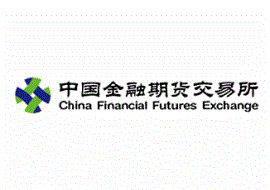China to open up CSI 300 futures to foreign investors

China’s decision was confirmed following the close of the Strategic and Economic Dialogue meeting held in Beijing.
"China will permit qualified foreign-invested firms duly incorporated in China to carry out stock index futures business in accordance with relevant laws and regulations and will allow QFFI to invest in stock index futures products," the two countries said in a joint statement.
Though the US has pushed for the regulatory changes in China, none of the 95 registered QFII firms headquartered in the US will be able to trade the index contact until the Commodity Futures Trading Commission gives clearance. Under US law, foreign boards of trade that wish to permit their US members and other participants in the country to have direct access to their electronic trade matching system, not through an intermediary, must request no-action relief from the CFTC’s Division of Market Oversight.
The impact of the move will depend on the rules the country’s regulator imposes on the foreign institutions.
The country’s financial regulator, the Chinese Securities Regulatory Commission, last month sent draft guidelines for the expansion of the types of firms allowed to trade the index derivatives to the market.
According to the draft, the CSRC will only allow the QFII firms to trade the index future for hedging purposes.
But further clarification is needed on which A-share positions could be hedged using the CFFE’s CSI 300 futures under these rules.
A China-based market source said that the rules proposed by the regulator have left the QFII firms unsure how many contracts the foreign firms would be able to trade.
“The index futures contract value shall not exceed the approved QFII quota on the end of each trading day,” read one condition of the CSRC proposal, while the third condition read: “The index futures contract value shall not exceed the entire investment quota on the end of each trading day.”
The quota will be decided upon by the State Administration of Foreign Finance. The source said that the QFII firms need clarification on whether these conditions refer to existing A share quotas or whether the authorities will impose a separate futures limit.
Dean Owen, China chief representative in Newedge’s Shanghai representative office, said that he believes the impact on trading volumes of the QFII participation will be determined by the quota imposed on the foreign institutions.
“The existing total QFII quota is less than $20bn, so if the futures limit is a percentage of that then I wouldn’t expect it to have too much of an impact of trading volumes,” Owen said.
The CSI 300 trading volumes have been high since they were launched on April 16, and throughput is growing. Average daily volume is now above 300,000 contracts despite heavy restrictions placed on the contract by the CSRC prior the launch.
While volumes are soaring, the pattern of open interest in the contract suggests that there is a lot of intraday trading.
Market commentators have suggested that Chinese traders may have adopted this approach to trading the contract because of the lack of hedging tools to hedge overnight international stock market movements.
Owen said he believes one area where the presence of QFII firms in the market is likely to be noticed is in the level of open interest.
Found this useful?
Take a complimentary trial of the FOW Marketing Intelligence Platform – the comprehensive source of news and analysis across the buy- and sell- side.
Gain access to:
- A single source of in-depth news, insight and analysis across Asset Management, Securities Finance, Custody, Fund Services and Derivatives
- Our interactive database, optimized to enable you to summarise data and build graphs outlining market activity
- Exclusive whitepapers, supplements and industry analysis curated and published by Futures & Options World
- Breaking news, daily and weekly alerts on the markets most relevant to you


